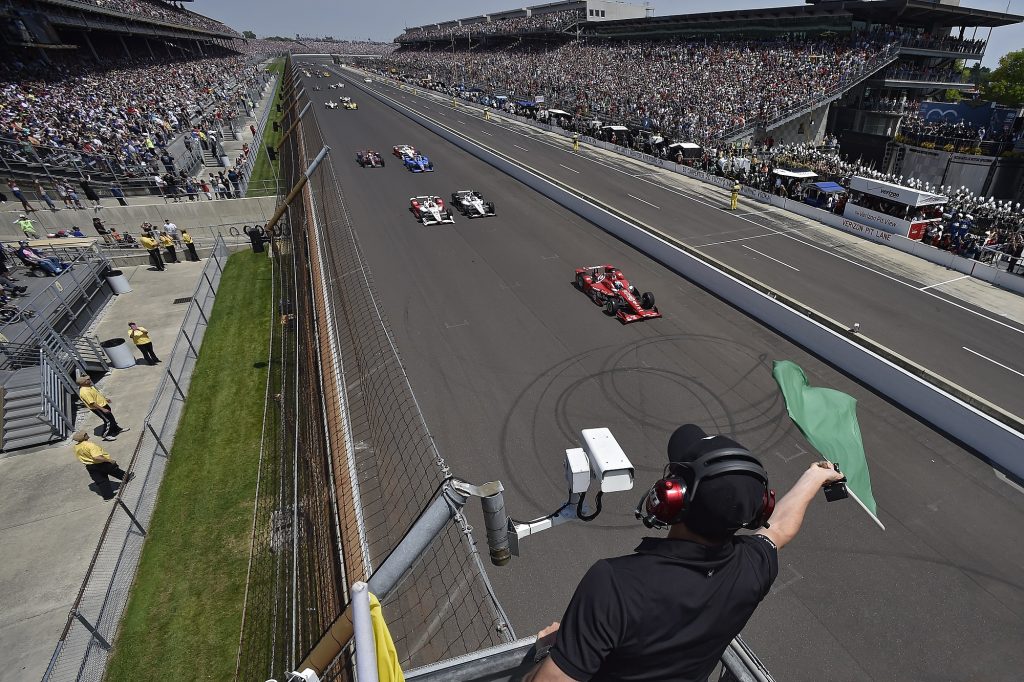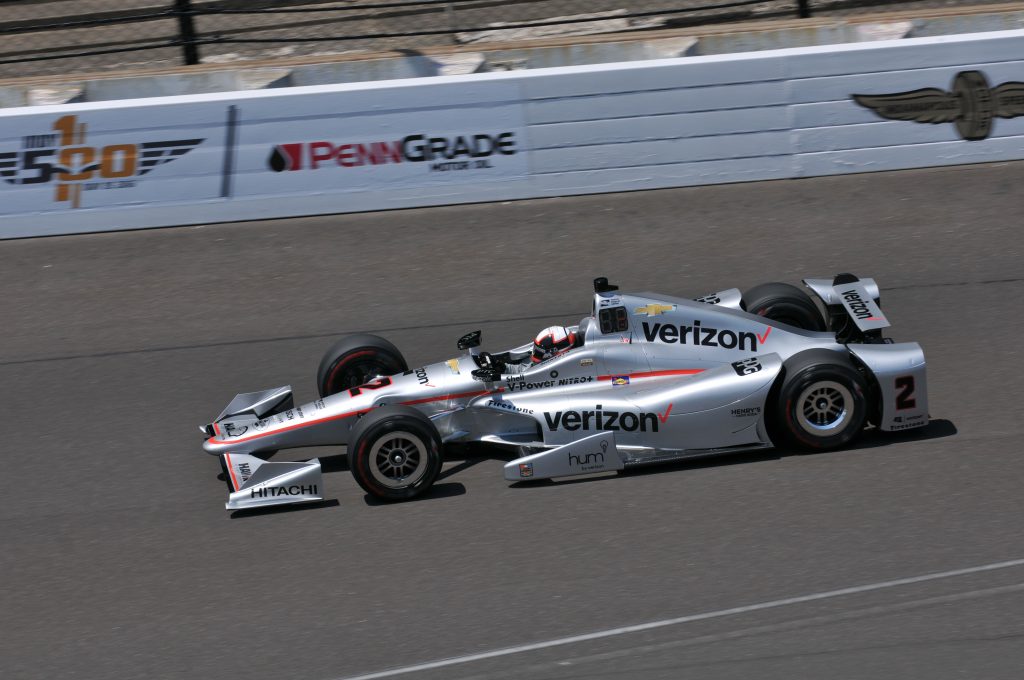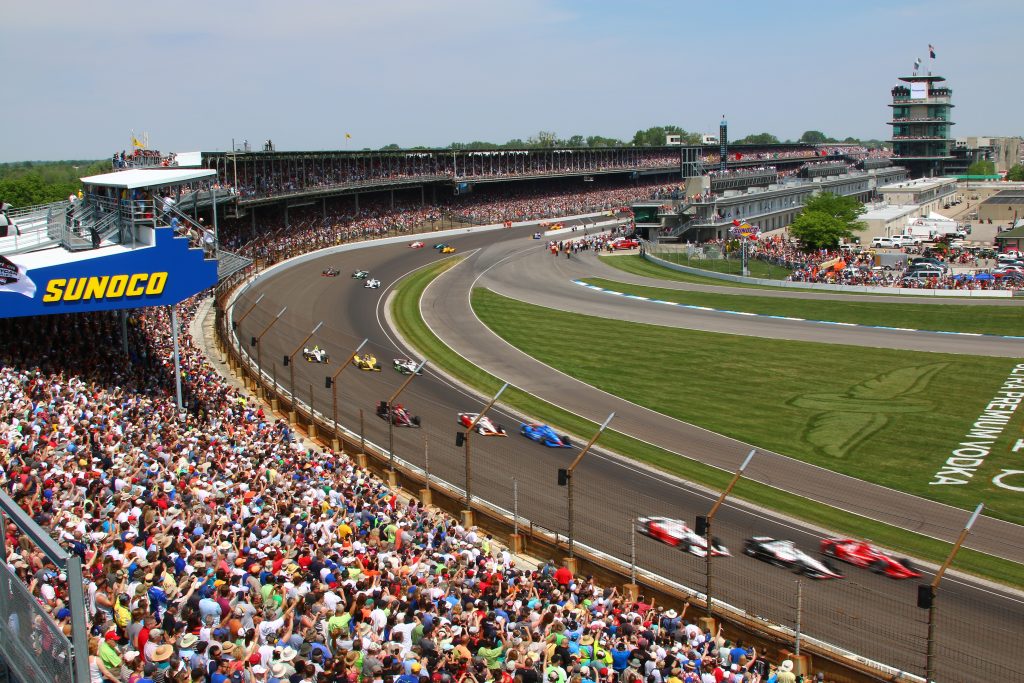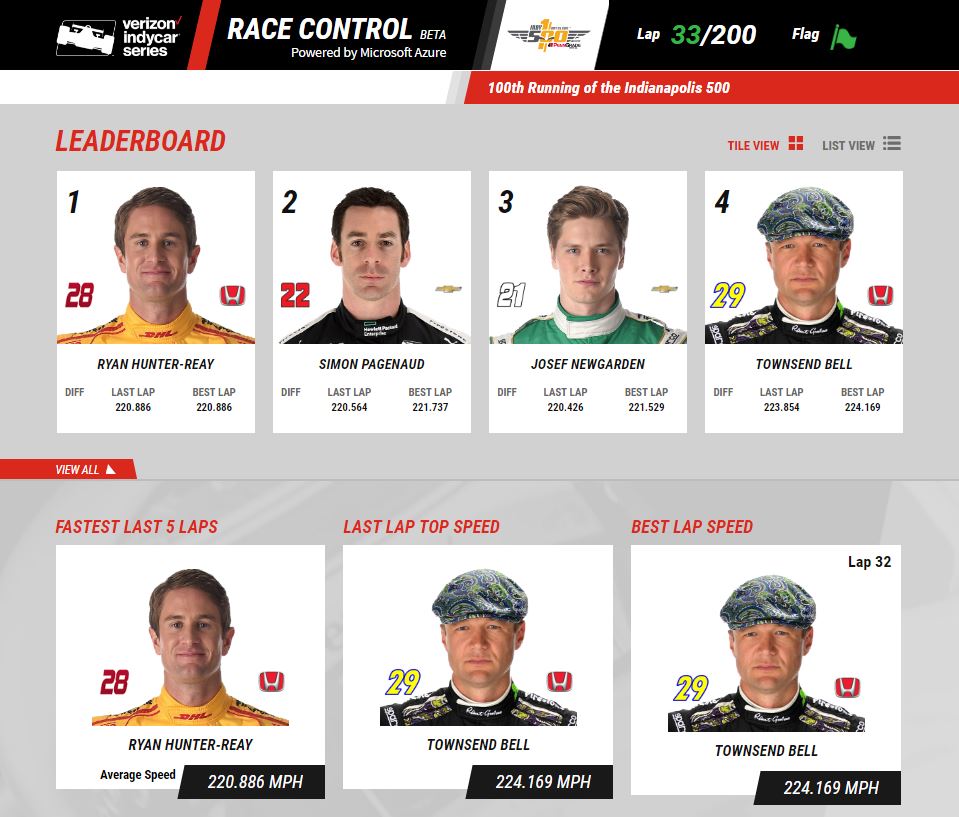New app harnesses high-speed data to deliver a winning experience to Indy 500 fans
As the Indianapolis 500 celebrates its 100th anniversary this weekend with its first sellout crowd, it’s introducing new technology to attract today’s connected generation to racing with an app that could even spawn a fantasy league, as the industry re-engineers how to make the century-old sport as exhilarating to new fans as it is to its loyal base.
The new Web app will give devotees of the Memorial Day weekend event a level of detail never before seen in motorsports. With access to data streaming from the cars as they race, enthusiasts will be able to track drivers’ performances section-by-section around the oval, along with lap statistics, course conditions and which drivers are “hot” or in the pit, getting a bigger story than just who’s leading at the moment, says C.J. O’Donnell, chief marketing officer for IndyCar Racing and the Indianapolis Motor Speedway (IMS).
More granular information about drivers and teams could help fans make data-driven predictions about which winning driver will get to gulp from a jug of milk while his team kisses the brick finish line. And that could lead to a much broader fan base and even the creation of data-driven fantasy racing, similar to fantasy football, deepening the level of interest in the sport.
“It’s a different way to look at racing,” says Bob Moore, the general manager of software company BlueMetal, which partnered with IndyCar, the IMS and Microsoft to build the app. “It will get people interested other than just the serious fan.”
The app uses Microsoft Azure technology to make sense of the 4.5 million rows of data that stream over the course of the three-hour race, grabbing data from the track and cars, putting it into a usable format, pulling it into the Azure cloud with streaming analytics, and then feeding it all into a website where fans can view real-time statistics.
“It’s a prime example of how cutting-edge technology like the Internet of Things can bring an iconic brand and event into a new century for a new generation of fans,” says Sam George, partner director for Azure IoT. “In the past, motorsports just showed point-in-time data, such as timing and scoring, and fans could only see what just happened. They’ve never had real-time, granular racecar telemetry like this, with a view of what’s happening lap-by-lap, leg-by-leg around the track.”
The project was conceived over dinner in February, when a group got together in Indianapolis to talk about the new app BlueMetal had created to celebrate a century of annual car races at the famous “Brickyard” track. They realized that of more than 150 data points streaming from pit row, only 16 were accessible to the public. The teams use some of the data to help them boost performance of their cars. But nothing was being done with the data broken down by the nine sections of the 2.5-mile oval track.

“I’m not a race fan – I’m more into sports like football and baseball – but I am a big gearhead, so I was thinking, being a technical person, what would interest me and what would get me to watch the Indy 500?” Moore recalls. Predictive analytics with a deeper dive into the data would be just the ticket to engage a “nerd” like him and keep him from dozing on the couch, he realized.
“We have the luxury of all this data that we’re already aggregating – we know what the cars are doing, how fast they’re going, how much fuel they’re consuming, how much throttle they’re using, how much brake, and we can trace steering angles, and more – there’re thousands of points of data, and we’re only using like 5 percent of it,” says Brian Simpson, IndyCar’s manager of digital and social media. “So now we have an opportunity to embrace this data-driven sports culture and showcase the sport to our fans in a really detailed manner.”
The app’s predictive abilities could lead to a fantasy league that lets fans pick winning drivers and compete against each other as they rack up points at races throughout the season, similar to popular leagues for football, basketball and golf, say Moore and Simpson. The app could even track weather conditions through the hours-long races, such as temperature, humidity, wind and barometric pressure, since all of that affects a car’s speed and performance.
This weekend, fans will be able to see whether a driver is “hot” – meaning he passed three people and moved up in the standings – as well as where each car is in real-time, what the fastest five laps were with their average speed, what the top speed of the last lap was, what every driver’s best time through each of the track’s nine sections was, and other interesting stats that the fans themselves helped choose through a Facebook poll last month. The live leaderboard will utilize push technology so users don’t have to constantly click refresh.
“This gives people the whole picture of the entire race, not just the leaders but the drivers in the middle who are maybe trying to make a move and charge toward the front,” says Simpson. “There could be battles in the back of the field or others who are performing better than the leaders, and unless you really know to pay attention to the guy who’s running 15th or 20th, you may not be able to see that. So we want to change that and show who’s on the move and help tell that bigger story of the race.”
The new technology has big potential in a historic sport that is drawing a record crowd this weekend – for the first time, even general-admission tickets were sold out. The IMS doesn’t release attendance figures, but the Indianapolis Star newspaper estimates that 350,000 people will squeeze around the oval as the Indy 500 enters a new era, more spectators than attended the past four Super Bowls combined.











